
The Pioneer SX-939 is a vintage stereo receiver that was released by Pioneer Corporation in 1974. It belongs to the Pioneer SX line that includes the SX-1010, SX-939, and SX-838. The SX-1010 was top of the line with 100 watts per channel. The SX-939 produced 70 watts per channel and the SX-838 50 wpc. The SX-939 retailed for $599.95 while the SX-1010 was $699.95 and the SX-838 $499.95. These prices included a walnut cabinet. The SX-939 looks great, has an excellent FM tuner and phono amp, and, at 70 wpc it can power most any 8 ohm speakers.
The SX-939 is also easy to maintain as many parts including, knobs, bulbs, transistors and circuit boards are all available on eBay. Check HERE for currently available parts.
Design and Appearance
The Pioneer SX-939 features a classic silver faceplate with a clean and minimalist design, characteristic of Pioneer receivers from that era. The front panel is dominated by a large tuning dial in the center, flanked by two meters to the left and the large tuning knob to the right. The overall construction of the receiver is sturdy and durable, with a metal chassis and solid controls.
The SX-939 has a brightly-illuminated dial panel, but if you find it too bright, there’s a convenient switch that allows you to dim the illumination. This way, you can customize the brightness to your preference.
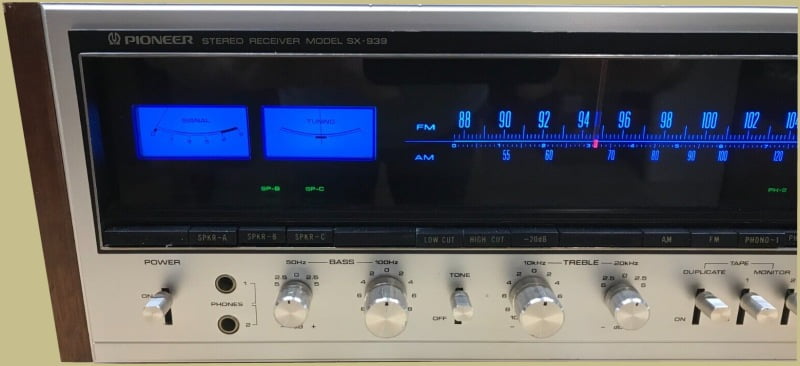
The control knobs are elegant with a fluted design and pioneer used black push buttons below the dial face for all the selection and filter controls. They are hardly noticeable as they blend in with the black background of the dial which gives the receiver a less crowded look.
Tone Control and Equalization
Pioneer’s unique Twin Tone Control System gives you unusually flexible control over the acoustical performance of the SX-939. The individual BASS and TREBLE controls are actually double controls; one part of each is a conventional MAIN control; the other part of each is a SUB control. The SUB controls allow you to boost or cut the frequency output in the low and high frequency ranges without altering the midrange response.
The SUB and MAIN controls can be used together or independently and with them it is possible to create up to 3,025 different types of tonal characteristics to suit the acoustical requirements of your room, speaker systems or phono cartridge.
The tone defeat switch instantly cancels the MAIN and SUB tone control functions and renders them “flat.” You’ll find that it is extremely handy: you’ll set it to compare the effects of adjustments on the tone controls to the “flat” output
of the receiver.
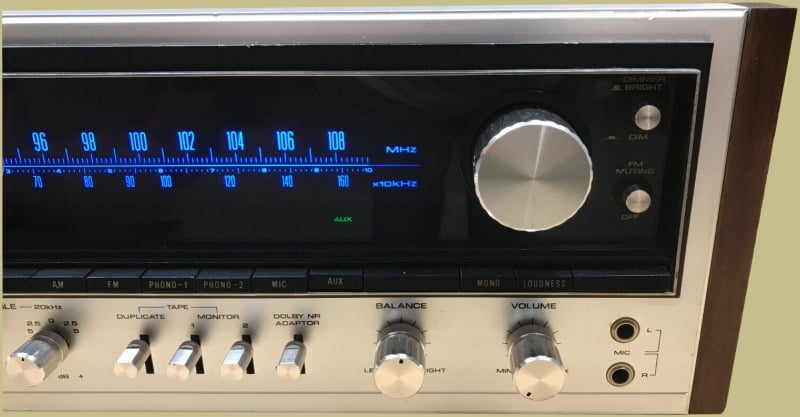
Power and Performance
The SX-939 delivers 70 watts per channel (RMS) into 8 ohms, providing ample power to drive a variety of speakers. The receiver utilizes a robust power supply and output stages, resulting in clean and dynamic audio reproduction. In fact, harmonic distortion of less than 0.3%. And this figure is measured and guaranteed over an audio range of 20 to 20,000Hz.
Specs:
- Tuning range: FM, MW
- Power output: 70 watts per channel into 8Ω (stereo)
- Frequency response: 10Hz to 40kHz
- Total harmonic distortion: 0.3%
- Damping factor: 45
- Input sensitivity: 2mV (mic), 2.5mV (MM), 150mV (DIN), 150mV (line)
- Signal to noise ratio: 65dB (mic), 70dB (MM), 95dB (line)
- Output: 150mV (line), 30mV (DIN), 1V (Pre out)
- Speaker load impedance: 4Ω (minimum)
- Semiconductors: 3 x FET, 4 x IC, 57 x transistors, 39 x diodes
- Dimensions: 20-15/32″(W) x 6-7/8″(H) x 16-17/32″(D) (520 x 175 x 420mm)
- Weight: 40 lb 13 oz. (18.5kg)
The SX-939 has the heavy duty, 90 degree angle feet and not the more common conical feet.
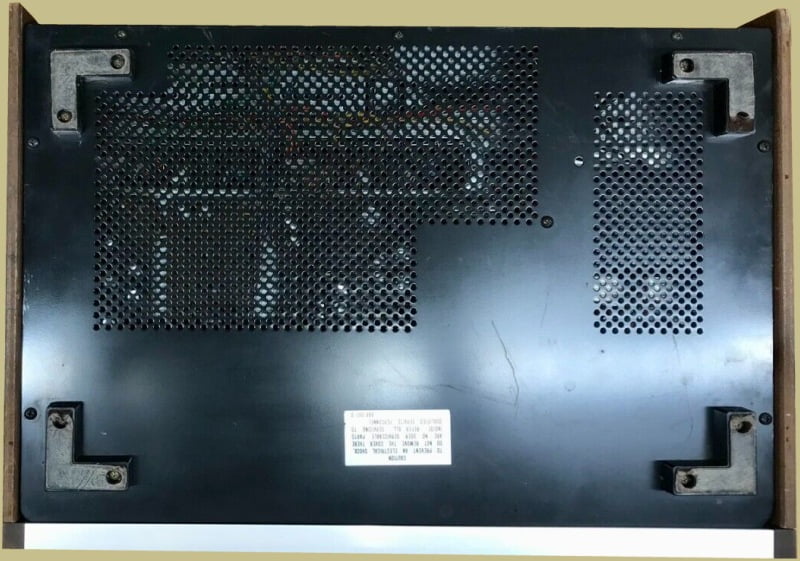
Tuner
The SX-939 offers a wide range of tuning options. It features an analog AM/FM tuner with a signal strength meter and a tuning meter for precise station selection. The receiver has an antenna input for connecting an external antenna to improve reception.
The FM tuner is excellent and incorporates a 4-gang variable capacitor and two dual-gate MOS FETs; the IF section features phase-linear ceramic filters and a 6-stage limiter; and the FM MPX is built around a very stable PLL (Phase Lock Loop) circuit. These extra touches result in excellent FM performance.
The multiplex circuit was of an entirely new design, featuring the PLL (Phase-Lock-Loop) technique. Advanced for its time, the circuit automatically locks the phase of the 19KHz FM pilot signal to that of the 38KHz FM switching circuit, assuring stable operation under all conditions. The circuit results in excellent low-distortion, wide-separation capabilities (more than 40dB at 1KHz, more than 30dB over the 50 to 10,000Hz range).
The FM IF section of the Pioneer SX-939 receiver incorporates two high-performance ICs (Integrated Circuits). These IC’s were hi-tech for the time as well.
Pioneer even stated that, “One of these ICs is an advanced LSI (Large Scale Integrated Circuit), which is like having 203 regular solid-state devices combined into one.”
These ICs work together to form a 6-stage limiter circuit, which ensures the IF section operates reliably and consistently. The limiter circuit helps control the input signal levels and contributes to the overall stability of the receiver.
The FM IF section also incorporates 6-element phase-linear ceramic filters, which improves FM reception. These filters were designed to maintain excellent phase linearity, ensuring that the audio signal remained faithful to the original waveform across a wide range of frequencies. This contributes to a clearer and more accurate FM reception experience. They enhance the FM IHF (Institute of High Fidelity) selectivity of the section, raising it to an impressive level of over 80dB. This high selectivity enables the receiver to perform exceptionally well even in urban areas with a high density of FM signals, allowing for a flawless listening experience even in crowded FM environments.
The SX-939 uses a special type of detector circuit called a “quadrature detector” in the FM IF section. This detector circuit has exceptional linearity and low distortion across a wide range of frequencies. This means that it accurately extracts the audio information from the FM signal without introducing significant distortion or altering the original sound quality. This feature is helps maintain the fidelity of the audio signal.
The AM section circuitry features a 3-gang variable capacitor, one-stage RF amplifier and other advantages. The AM IF section employs ceramic filters to obtain sharp selectivity with optimum bandwidth.
Amplifier
Thanks to the first-stage differential amplifier and bias compensation circuit, the stability of the power amplifier section is improved to the point that off-set voltage is maintained ±0.01V within the temperature range of -15 C to +55°C.
High open-loop gain is obtained through the use of a constant-current circuit. Pioneer applied negative feedback in the power amplifier section so that it produces extremely low-distortion performance. In fact, distortion is measured at less than 0.3% over the entire 20 to 20,000Hz frequency range at continuous power output.
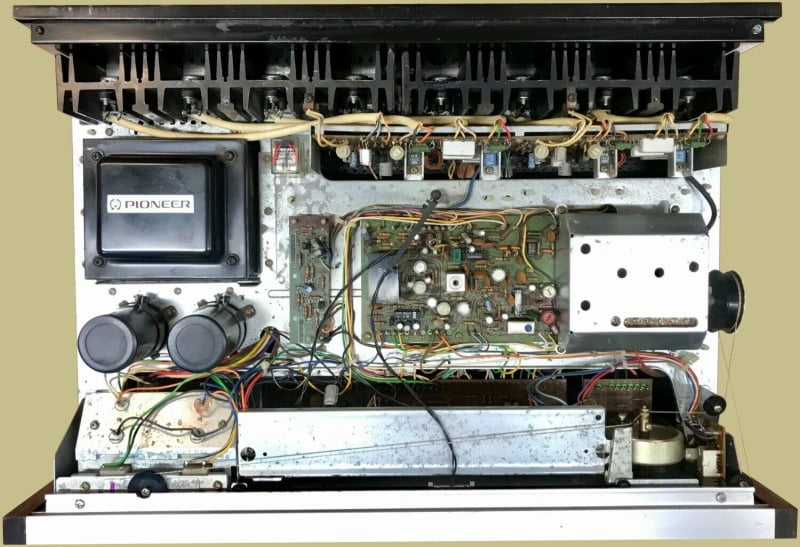
Phono Circuit
In general, the SX-939’s phono pre-amp is very good. Pioneer selected high quality elements (resistors and capacitors) as the basic ingredients for the phono amp and equalizer circuits. Deviation from the RIAA standard over the entire 30 to 15,000Hz range is limited to ±0.3dB. This extremely precise performance means that you hear all the sounds a recording engineer intends to be heard.
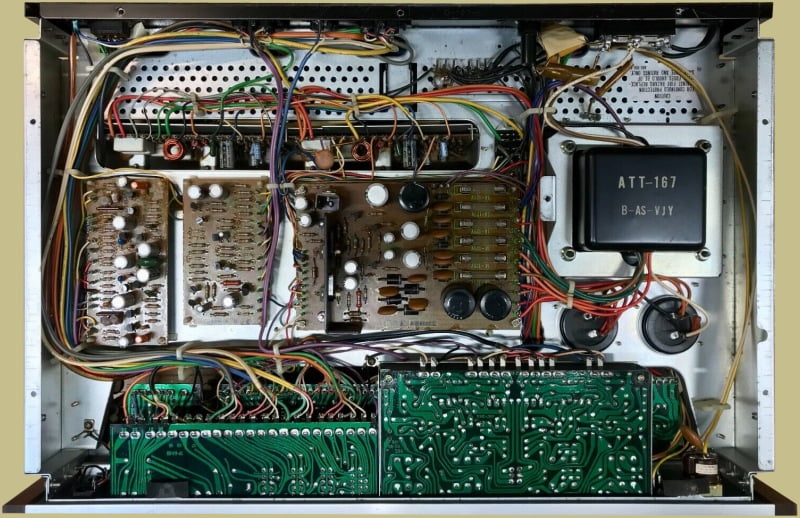
Connectivity
In terms of connectivity, the SX-939 provides various input and output options. It has multiple RCA inputs for connecting external audio sources such as 2 phono inputs, 2 tape deck inputs, and an AUX input. It has outputs for 3 sets of speakers. The receiver also includes preamp outputs.
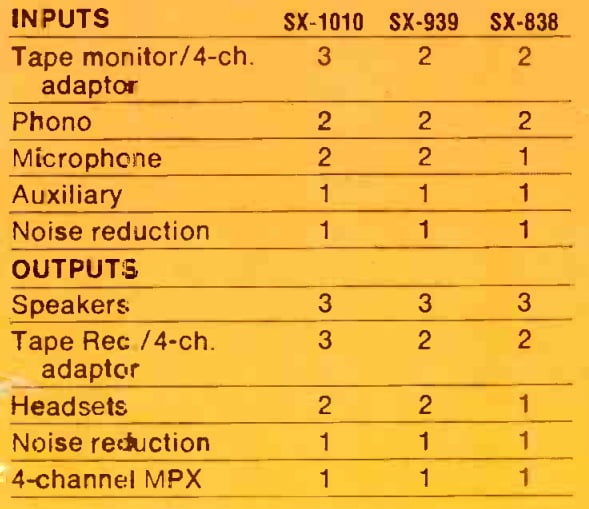
Problems
While Pioneer’s SX-939 is an excellent receiver it is known for a few problems. For one, the power supply is in the bottom middle of the unit which causes heat issues over time which, many times, requires a rebuild. Also, all of the controls get dirty over the years which can causes multiple problems. Unfortunately they aren’t very easy to get to and require some disassembly. These aren’t really severe issues and can be dealt with by any competent repair shop.

Overall, the Pioneer SX-939 is an excellent receiver with numerous upsides and very few downsides. Excellent aesthetics, a high performing FM tuner, and a very good phono section make it an easy choice for an audio enthusiast. In fact, a fully restored SX-939 can perform with the best of the top of the line receivers of the time. It’s even comparable to the SX-1010 only with a little less power.


If I purchase a sx-939 and it needs some work, where is a good competent repair shop I could use to upkeep my investment?
Hi Steve,
I just had my 939 totally restored by a master technician in Wisconsin. The specs of the restored unit are vastly improved over the original distortion and power specs. The sound is silky smooth and it sounds even better than I remembered in college. Erik is not inexpensive, but he is thorough. He replaced 95 capacitors! A new record for him he says. He also cleaned up and tuned two QSC power amps. He was so impressed with the “novel” design of these that he went out and bought one for himself. He specializes in vintage audio gear. He works by himself in a small shop so his prices are reasonable.
I also had a Nakamichi ZX-9 restored by Willy Hermann who is the legendary Nakamichi tech. I purchased this deck brand new in about 1984 when I worked at Nakamichi. I have had it ever since. This deck is now flat to 22k!. Such magic hearing well recorded analog tapes playing through a vintage receiver.
Let me know how I can forward Erik’s contact information without subjecting him to spam. Maybe a moderator can help let me know? Thank you.
Glenn
this is the pinnacle for monster receiver refurb. did my sansui qrx 7001. Cost a fortune. Audio output was night, then $$$$.$$ later….a bright shiny day!
tech@qrxrestore.com
they do pioneers too. they did a Pioneer qx-949a for me too